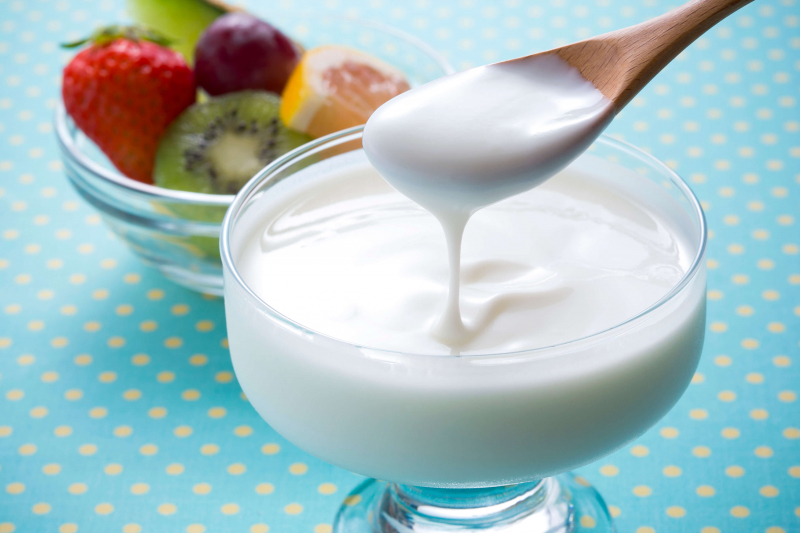Yogurt
A food called yogurt, usually spelled yogurt, is made when bacteria in milk ferment. Yogurt cultures are the bacteria that are used to manufacture yogurt. These bacteria ferment milk sugars into lactic acid, which reacts with milk protein to give yogurt its characteristic acidic texture and flavor. The milk that is most frequently used to produce yogurt is cow's milk. Yogurt can also be made from the milk of water buffalo, goats, ewes, mares, camels, and yaks. You can use homogenized milk or not. It can be either raw or pasteurized. The effects of each variety of milk are very diverse.
Plain yogurt made from whole milk has 81% of water, 9% of protein, 5% of fat, and 4% of carbs, including 4% of sugar (table). Yogurt with high-fat content is a very nutritious and practical food. It has a huge variety of nutrients, including lipids, proteins, and carbohydrates. There are lots of yogurt-based snacks and recipes for healthy weight gain. A 100-gram serving has 406 kilojoules (97 kcal) of caloric intake. A serving of yogurt has a moderate amount of protein, phosphorus, and selenium but is a significant source of vitamin B12 and riboflavin. There are many beneficial bacteria for the digestive tract in other forms of sour cream. You should consume as a result each day.
Yogurt is frequently related to probiotics because it may contain live cultures, which have been theorized to have advantageous effects on immunological, cardiovascular, or metabolic health. High-quality clinical evidence was lacking as of the early 21st century to draw the conclusion that ingesting yogurt lowers the risk of illnesses or otherwise enhances health. According to meta-analyses, post-menopausal women who consume 80 grams of low-fat yogurt daily have a lower chance of acquiring type 2 diabetes and a lower incidence of hip fracture.












